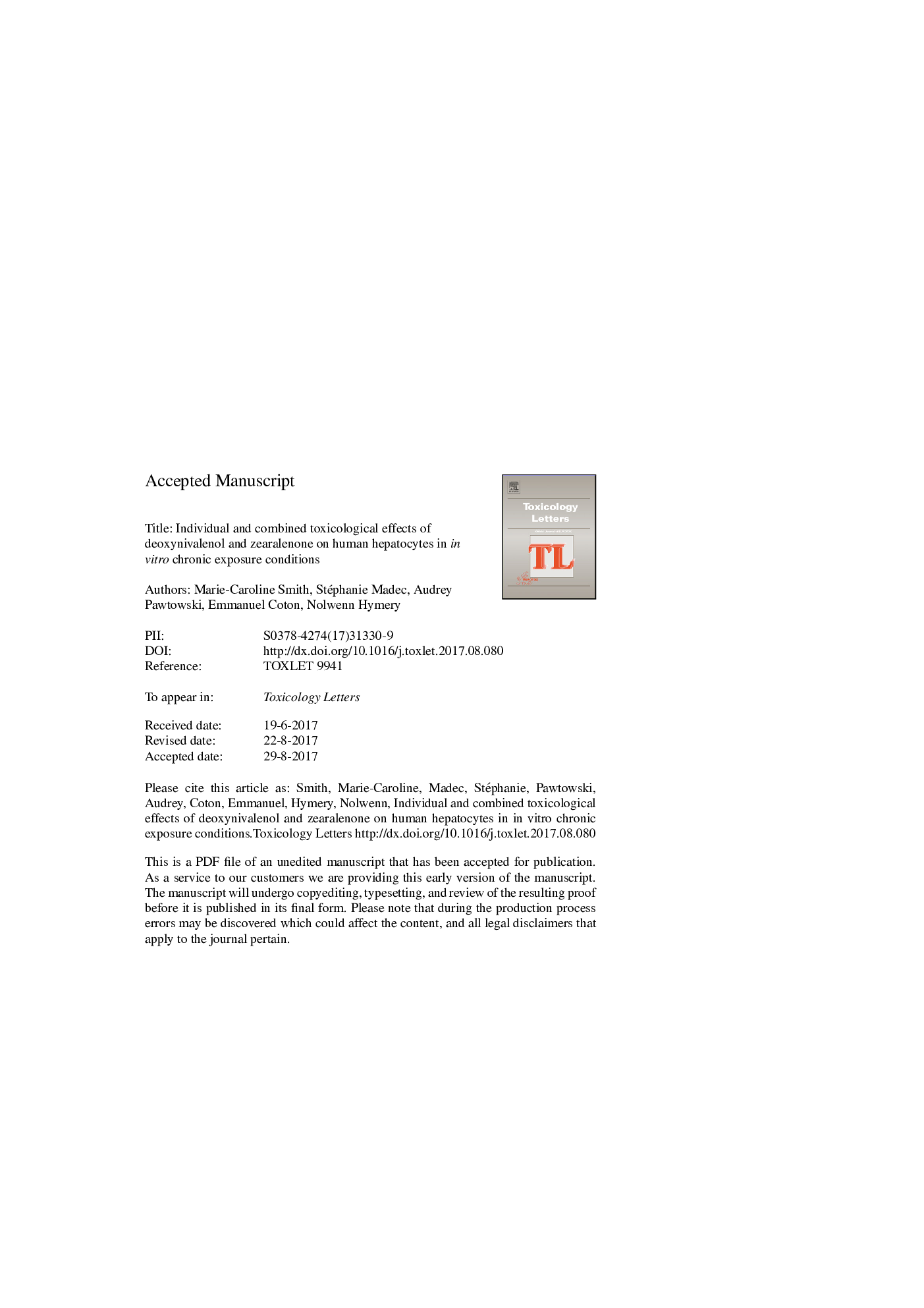| Article ID | Journal | Published Year | Pages | File Type |
|---|---|---|---|---|
| 5562042 | Toxicology Letters | 2017 | 32 Pages |
Abstract
While numerous surveys highlighted the natural co-occurrence of mycotoxins in food, data about their toxicological combined effects is still limited. This is especially the case for chronic exposure conditions, although the latter are more representative of the mycotoxin risk associated with food consumption than acute exposure. In the present study, cell viability and gene expression levels of relevant hepatocyte-specific functions were evaluated for the HepaRG human liver cell line exposed to deoxynivalenol (DON) and/or zearalenone (ZEA) during 14, 28 and 42Â days at three subtoxic concentrations corresponding to i) the determined average exposure dose of French adult population, ii) the tolerable daily intake established by the Joint FAO/WHO Expert Committee and iii) the maximum level permitted by the European regulation in cereals intended for direct human consumption. For the latter, DON and DONÂ +Â ZEA induced 90% cell mortality after 14Â days. In addition, depending on the considered toxin or mixture, doses and exposure periods, important variations of gene expression levels were observed. Despite the fact that in vitro conditions differ from the in vivo situation, the obtained results clearly highlighted that long-term toxicological effects of chronic exposure to mycotoxin combinations should be further investigated and, if necessary, taken into consideration at the regulatory level.
Keywords
Related Topics
Life Sciences
Environmental Science
Health, Toxicology and Mutagenesis
Authors
Marie-Caroline Smith, Stéphanie Madec, Audrey Pawtowski, Emmanuel Coton, Nolwenn Hymery,
